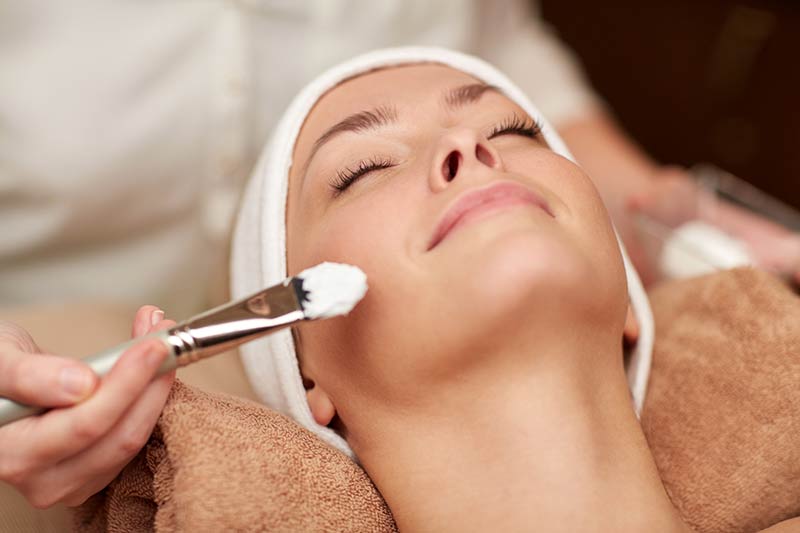Debunking Myths About Chemical Peels

Strong 8k brings an ultra-HD IPTV experience to your living room and your pocket.
Chemical peels have gained immense popularity in the realm of skincare and cosmetic treatments, offering solutions for a variety of skin concerns, from acne and hyperpigmentation to fine lines and uneven texture. However, despite their widespread use, numerous myths and misconceptions surround chemical peels, leading to confusion and hesitation among potential users. This article aims to debunk common myths about Chemical Peels Dubai, providing clarity on what they are, how they work, and who can benefit from them.
Understanding Chemical Peels
Before diving into the myths, it’s essential to understand what chemical peels are. A chemical peel is a cosmetic treatment that involves applying a chemical solution to the skin, which causes controlled exfoliation. This process removes the outer layers of dead skin cells, revealing fresher, healthier skin underneath. Chemical peels can be classified into three main categories based on their depth of penetration:
Superficial Peels: These peels use mild acids, such as alpha-hydroxy acids (AHAs) or beta-hydroxy acids (BHAs), to exfoliate the outermost layer of skin. They are often used for improving skin texture and tone.
Medium Peels: These peels penetrate deeper into the skin using trichloroacetic acid (TCA) or glycolic acid. They are effective for treating moderate skin issues, including fine lines, sun damage, and acne scars.
Deep Peels: These peels use stronger agents, such as phenol, to penetrate the deeper layers of skin. They are typically reserved for more severe skin concerns, such as deep wrinkles and significant sun damage.
Chemical Peels Are Only for Aging Skin
One of the most prevalent myths is that chemical peels are only suitable for older individuals looking to combat signs of aging. While it’s true that many people seek chemical peels for anti-aging benefits, they are not limited to this demographic.
Reality
Chemical peels can benefit individuals of all ages and skin types. Young adults often seek chemical peels to address acne, oily skin, and uneven texture. In fact, superficial peels are commonly used to treat active acne and prevent future breakouts. Additionally, chemical peels can help improve skin tone and texture, making them suitable for anyone looking to enhance their skin’s appearance, regardless of age.
Chemical Peels Are Extremely Painful
Another common misconception is that chemical peels are painful and uncomfortable procedures. This myth can deter individuals from seeking treatment, fearing that the pain will outweigh the benefits.
Reality
While some discomfort may be experienced during a chemical peel, it is generally mild and temporary. Superficial peels often feel like a slight tingling or warming sensation, while medium and deep peels may cause more noticeable discomfort. However, practitioners typically apply a topical anesthetic to minimize pain during deeper peels.
Post-treatment, patients may experience redness, swelling, and peeling, similar to a sunburn, but these effects are manageable and usually subside within a few days. Most individuals find the results well worth any temporary discomfort.
Chemical Peels Are Only for Light Skin
There is a widespread belief that chemical peels are only effective or safe for individuals with light skin tones. This myth stems from historical practices and a lack of representation in clinical studies.
Reality
Chemical peels can be safely performed on all skin types, including darker skin tones. However, it is crucial to choose the right type of peel and practitioner experienced in treating diverse skin types.
Darker skin may be more prone to hyperpigmentation after a peel, so practitioners often recommend specific formulations and techniques to minimize this risk. For instance, using milder acids and avoiding aggressive treatments can help ensure safe and effective results for individuals with darker skin.
Chemical Peels Require Long Downtime
Many people believe that undergoing a chemical peel will result in significant downtime, preventing them from resuming their daily activities. This myth can be particularly concerning for those with busy lifestyles.
Reality
The downtime associated with chemical peels varies depending on the type of peel performed. Superficial peels typically require little to no downtime, allowing individuals to return to their normal activities immediately.
Medium peels may involve a few days of redness and peeling, while deep peels can require a week or more for recovery. However, most practitioners provide clear aftercare instructions to help patients manage their recovery effectively. With proper care, many individuals can return to their routines relatively quickly.
Chemical Peels Are Only for the Face
Some individuals believe that chemical peels are exclusively for facial treatments, limiting their potential benefits. This misconception can prevent people from exploring the full range of applications for chemical peels.
Reality
Chemical peels can be performed on various areas of the body, not
continue
just the face. In fact, chemical peels can be effectively used on the neck, chest, hands, and even the back to address various skin concerns.
Body Applications
Neck and Chest: These areas are often exposed to the sun and can show signs of aging, such as wrinkles and pigmentation. Chemical peels can help rejuvenate the skin, improving texture and tone.
Hands: The hands are another area that can reveal age and sun damage. Chemical peels can reduce the appearance of age spots and improve skin texture.
Back: For individuals suffering from back acne or scarring, chemical peels can help clear the skin and promote healing.
Arms and Legs: Chemical peels can also be used to treat keratosis pilaris (often referred to as "chicken skin") and other textural issues on the arms and legs.
Chemical Peels Are a One-Time Solution
Many people believe that a single chemical peel will provide permanent results, leading to disappointment when they do not see lasting effects.
Reality
While chemical peels can produce significant improvements in skin texture and appearance, they are not a one-time solution. The skin continues to age and undergo changes due to factors like sun exposure, hormonal fluctuations, and lifestyle choices.
To maintain results, individuals may need to undergo a series of peels spaced several weeks apart, followed by regular maintenance treatments. Additionally, incorporating a good skincare routine and sun protection can help prolong the benefits of chemical peels.
Chemical Peels Are Only for Women
There is a common stereotype that chemical peels are primarily for women, leading many men to shy away from these treatments.
Reality
Chemical peels are suitable for anyone, regardless of gender. Men can benefit from chemical peels just as much as women, especially for concerns like acne, razor bumps, and signs of aging. In recent years, there has been a growing trend of men seeking cosmetic treatments, including chemical peels, as they become more aware of skincare and grooming.
Chemical Peels Will Make Your Skin Thin
Some individuals fear that undergoing chemical peels will thin their skin, leading to increased sensitivity and vulnerability.
Reality
When performed correctly, chemical peels do not thin the skin. In fact, they can help improve the overall health and appearance of the skin by promoting cell turnover and collagen production.
Superficial peels, in particular, are designed to remove only the outermost layer of dead skin cells, while deeper peels stimulate the skin’s natural healing processes. It’s essential to have chemical peels performed by a qualified professional who understands the appropriate depth and type of peel for your skin type and concerns.
You Can’t Wear Makeup After a Chemical Peel
Many people believe that they must avoid makeup for an extended period after a chemical peel, fearing that it will irritate their skin or interfere with the healing process.
Reality
While it is advisable to avoid heavy makeup immediately after a chemical peel, most practitioners allow the use of light, non-comedogenic makeup after a few days, depending on the type of peel performed.
For superficial peels, patients can often resume wearing makeup within a day or two. However, for medium and deep peels, it’s best to wait until the skin has fully healed to avoid irritation. Always follow your practitioner’s aftercare instructions for the best results.
Chemical Peels Are Only for Cosmetic Purposes
Some individuals believe that chemical peels are purely cosmetic treatments with no medical benefits.
Reality
Chemical peels have both cosmetic and medical applications. In addition to improving the appearance of the skin, they can be used to treat various dermatological conditions, including:
Acne: Chemical peels can help reduce acne breakouts and prevent future occurrences by exfoliating the skin and unclogging pores.
Rosacea: Certain types of chemical peels can help reduce redness and inflammation associated with rosacea.
Actinic Keratosis: Chemical peels can be used to treat this precancerous condition caused by sun damage.
Melasma: Chemical peels can help lighten hyperpigmentation associated with melasma, a common skin condition.
Conclusion
Chemical peels are a versatile and effective treatment option for a wide range of skin concerns, but misconceptions can lead to confusion and hesitation among potential users. By debunking these common myths, we can better understand the true nature of chemical peels and their benefits.
Note: IndiBlogHub features both user-submitted and editorial content. We do not verify third-party contributions. Read our Disclaimer and Privacy Policyfor details.







